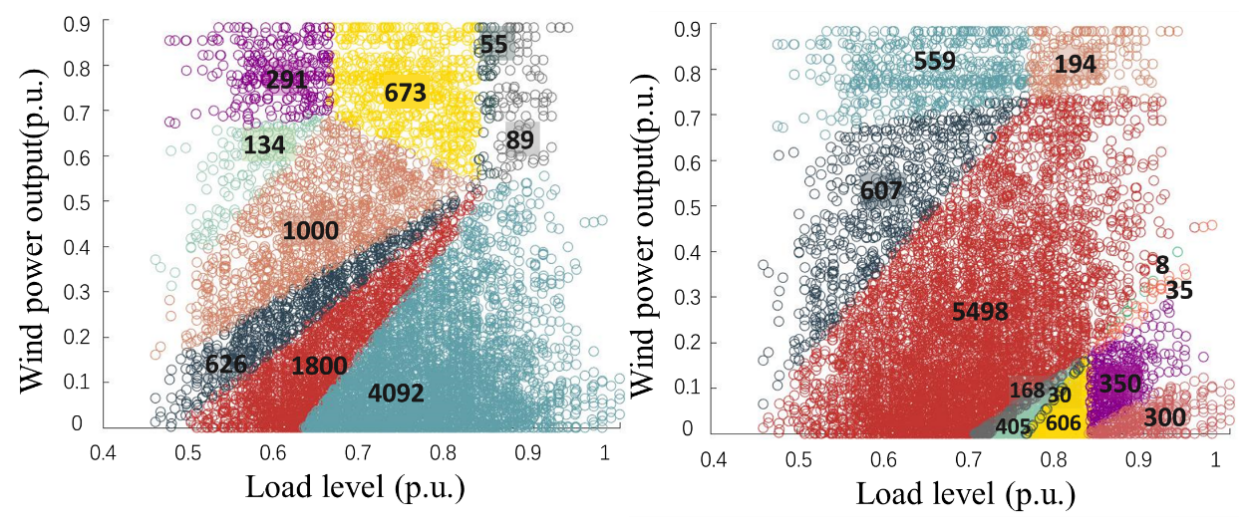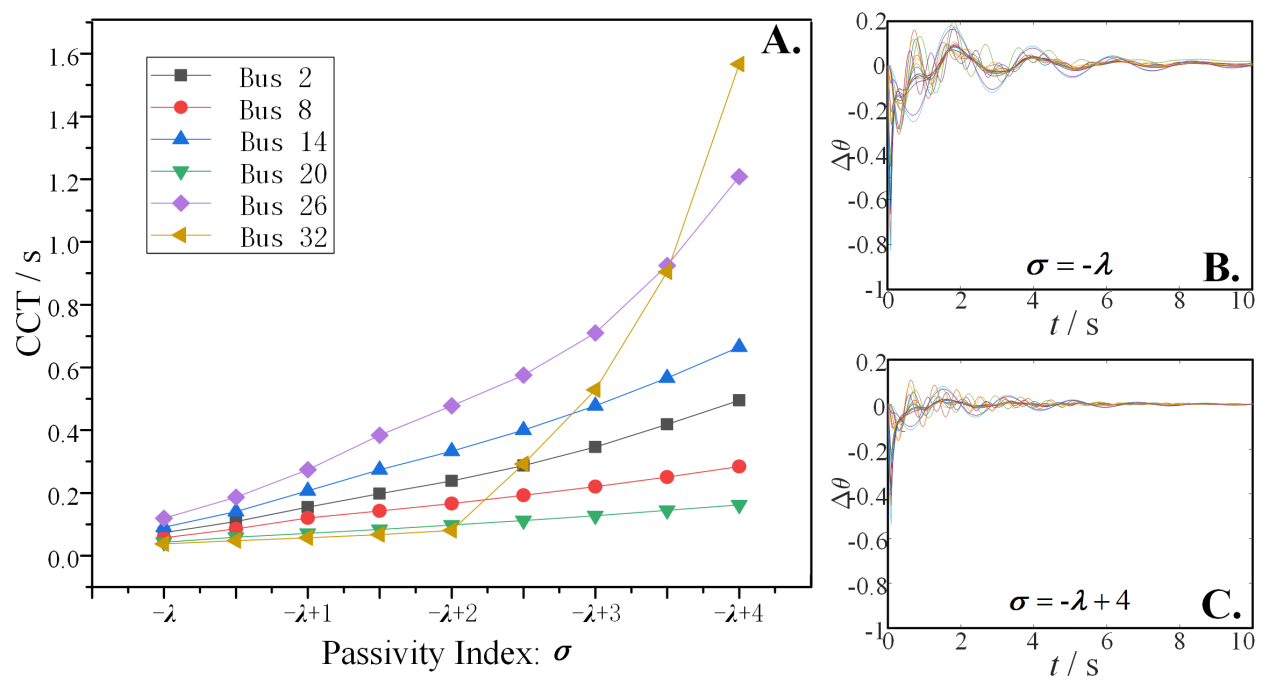recently, the ieee transactions on power systems elected the best papers from 2018 to 2020. among the 7 papers elected, two were from the department of electrical engineering and applied electronics, namely "incorporating massive scenarios in transmission expansion planning with high renewable energy penetration" published by associate professor zhang ning and professor kang chongqing as the correspondence authors in march 2019 and "distributed stability conditions for power systems with heterogeneous nonlinear bus dynamics" published by associate professor liu feng as the correspondence author in november 2019.
ieee transactions on power systems is an authoritative academic journal in the field of power system engineering, with about 400 papers published every year. the best papers are elected once a year through the recommendation by each member of the editorial board and screened by the editorial board, and 7-8 papers are selected from about 1200 papers published in the past three years on the basis of paper quality, innovation and academic influence. among the 7 best papers elected in 2020, the 2 papers published by eea are the only 2 papers from china.
the first author of the paper "incorporating massive scenarios in transmission expansion planning with high renewable energy penetration" is zhuo zhenyu, a doctoral student of eea, and the correspondence authors are associate professor zhang ning and professor kang chongqing. co-authors include professor xia qing and assistant researcher du ershun from eea. this paper is worked out with the support of the national key research and development project "basic theory of power system planning and operation of grid incorporated with high renewable energy".
with the incorporation of high renewable energy, there is great uncertainty at the source end and the load end, and the "operation mode" of the power system will be more complicated, decentralized and differentiated. therefore, massive scenarios need to be considered in the planning model though they usually bring huge computational burden or even lead to computational failure. the traditional scenario reduction method can neither control the number of scenarios reduced nor ensure the global optimality of the solution. it is a difficulty to balance the scenario comprehensiveness and computational efficiency in high renewable energy grid planning. this method is based on benders decomposition method and multi-parameter programming method to cluster the influence of each scenario on the optimal solution, which can accelerate the solution of the stochastic programming problem and maintain the optimality of the solution. in the benders decomposition method, each scenario will influence the planning result by generating benders cuts. based on the multi-parameter programming method, the influence of each scenario on the benders iterative solution process can be obtained analytically. this study takes this as a basis to cluster the scenarios, integrate the scenario cluster into the solving process, and cluster according to the results. this computational method is applied and analyzed in the uplink test system of garver 6murbus, ieee rts-79, ieee rts-96 and a practical provincial system. the computational efficiency is more than 6 times higher than that of the traditional benders decomposition method.

fig. 1: schematic structure of the algorithm introduced in this paper. this algorithm dynamically cluster the scenario influence on the iterative process, so as to avoid repeated calculation of sub-problems and reduce the computational burden.

fig. 2: visualization result of the iterative process by the algorithm introduced in this paper.
the first author of the paper "distributed stability conditions for power systems with heterogeneous nonlinear bus dynamics" is yang peng, a doctoral student of eea, the correspondence author is associate professor liu feng, and the co-authors include professor shen chen and dr. wang zhaojian of eea. this paper is worked out with the support of the national natural science foundation project "research on general control protocol to support extensive and flexible access of massive heterogeneous distributed energy sources" and the national natural science foundation joint fund project "autonomous control and operation accessed with distributed generation cluster".
with the access of large-scale renewable energy and the re-electrification process on the load side, massive dynamic equipment with different characteristics, such as power supply, load, energy storage and so on, are accessed to the existing power system, resulting in a surge in the number of dynamic components in the system. the traditional power system stability analysis method needs to collect the whole system information and calculate centrally in the control center. however, with the rapid expansion of the scale of the system, the centralized analysis method will be challenged by great computing burden, communication burden and so on. for a highly nonlinear, highly coupled and highly heterogeneous power system, how to realize the expandability of stability analysis is a key problem that needs to be solved urgently. in this paper, a distributed stability analysis method based on output differential passivity is proposed, and the overall stability condition of the system can be divided into two parts: nodes and network. the output differential passivity conditions for each node can be verified locally without the participation of the center, and the conditions of the network part are only related to the power flow and not involving any internal information of the device, and thus the expandability of stability analysis compatible with different kinds of dynamic devices can be realized. based on this method, the stability conditions of heterogeneous nonlinear devices connected to the grid can be constructed, and it is expected to further establish a general stability control protocol for the devices, so as to ensure the safe and stable operation of complex power systems in the form of distributed self-stabilization. a simulation example based on ieee 39 nodes proves that the distributed method proposed in this paper can ensure the stability of the whole system with low conservatism.
fig. 3: schematic diagram of the relationship between node dynamics and network coupling. massive heterogeneous nonlinear node dynamics are coupled into a complex power system through the input-output port of the electrical network, the method proposed in this paper decomposes the overall stability of the system into a comparison between the differential passivity index of the node part and the index of the network coupling part.

fig. 4: relationship between node dynamic output differential passivity and system transient stability. when the short-circuit fault is simulated at different nodes of the ieee-39 system, the stronger the output differential passivity of the node dynamic (described quantitatively by the passivity index), the longer the critical clearing time (cct) of the fault, indicating that the better the transient stability.
official website of best papers
https://ieeexplore.ieee.org/document/9358108
original paper link
incorporating massive scenarios in transmission expansion planning with high renewable energy penetration
https://ieeexplore.ieee.org/document/8821421
distributed stability conditions for power systems with heterogeneous nonlinear bus dynamics
https://ieeexplore.ieee.org/document/8890862








